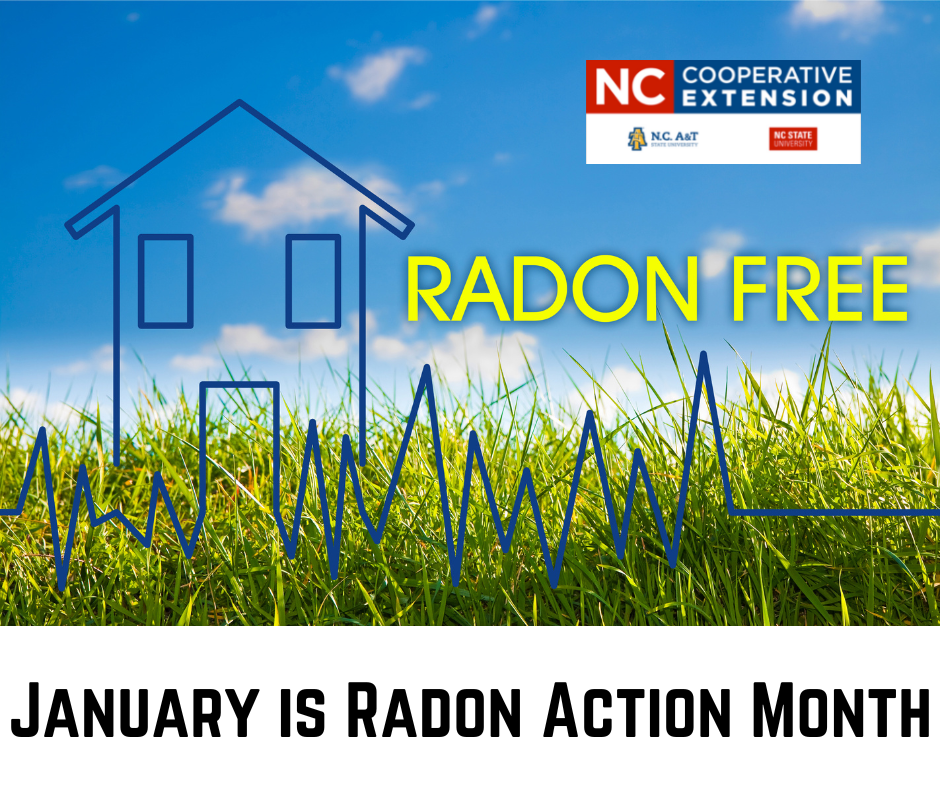The Silent Danger: Radon
go.ncsu.edu/readext?906258
en Español / em Português
El inglés es el idioma de control de esta página. En la medida en que haya algún conflicto entre la traducción al inglés y la traducción, el inglés prevalece.
Al hacer clic en el enlace de traducción se activa un servicio de traducción gratuito para convertir la página al español. Al igual que con cualquier traducción por Internet, la conversión no es sensible al contexto y puede que no traduzca el texto en su significado original. NC State Extension no garantiza la exactitud del texto traducido. Por favor, tenga en cuenta que algunas aplicaciones y/o servicios pueden no funcionar como se espera cuando se traducen.
Português
Inglês é o idioma de controle desta página. Na medida que haja algum conflito entre o texto original em Inglês e a tradução, o Inglês prevalece.
Ao clicar no link de tradução, um serviço gratuito de tradução será ativado para converter a página para o Português. Como em qualquer tradução pela internet, a conversão não é sensivel ao contexto e pode não ocorrer a tradução para o significado orginal. O serviço de Extensão da Carolina do Norte (NC State Extension) não garante a exatidão do texto traduzido. Por favor, observe que algumas funções ou serviços podem não funcionar como esperado após a tradução.
English
English is the controlling language of this page. To the extent there is any conflict between the English text and the translation, English controls.
Clicking on the translation link activates a free translation service to convert the page to Spanish. As with any Internet translation, the conversion is not context-sensitive and may not translate the text to its original meaning. NC State Extension does not guarantee the accuracy of the translated text. Please note that some applications and/or services may not function as expected when translated.
Collapse ▲ January is National Radon Action Month. Did you know that 1 in every 15 homes has high radon levels? According to the Center for Disease Control, radon is the second leading cause of lung cancer in the United States. Radon is an odorless, invisible radioactive gas that is naturally occurring and formed by the decay of uranium in rocks, soil, or water. When radon leaches into your home or building through cracks or holes, it can accumulate over time and get confined within the air that you breathe. The U.S. Environmental Protection Agency (EPA) estimates that nearly 21,000 people die each year from radon induced lung cancer in the United States.
January is National Radon Action Month. Did you know that 1 in every 15 homes has high radon levels? According to the Center for Disease Control, radon is the second leading cause of lung cancer in the United States. Radon is an odorless, invisible radioactive gas that is naturally occurring and formed by the decay of uranium in rocks, soil, or water. When radon leaches into your home or building through cracks or holes, it can accumulate over time and get confined within the air that you breathe. The U.S. Environmental Protection Agency (EPA) estimates that nearly 21,000 people die each year from radon induced lung cancer in the United States.
To know if you have radon in your home, a discounted test kit is available to all North Carolina residents as part of the N.C. Radon Program.
If your radon levels are below 4 picocuries per liter (pCi/L) and you want to reduce them further, consider sealing cracks in your floors and walls and increasing the ventilation inside your home. Natural ventilation such as opening a window is only a temporary solution as levels of radon can return to previous levels within 12 hours once windows, vents and doors are shut again.
If your test reveals high radon levels of 4 pCi/L or above, then the EPA recommends you hire a qualified professional to install a radon reduction (also called radon mitigation) system. Radon reduction systems can be highly effective with up to a reduction of 99% from the initial testing. After installation of the radon reduction system, a retest should be completed in the first 30 days and every 2 years following.
For more information visit:
EPA Consumer’s Guide to Radon Reduction
EPA:Radon-Resistant Construction Basics and Techniques
For further questions, please contact Marlana Baker, Family & Consumer Science Agent at marlana_baker@ncsu.edu or by calling (828)837-2210 extension 5.




